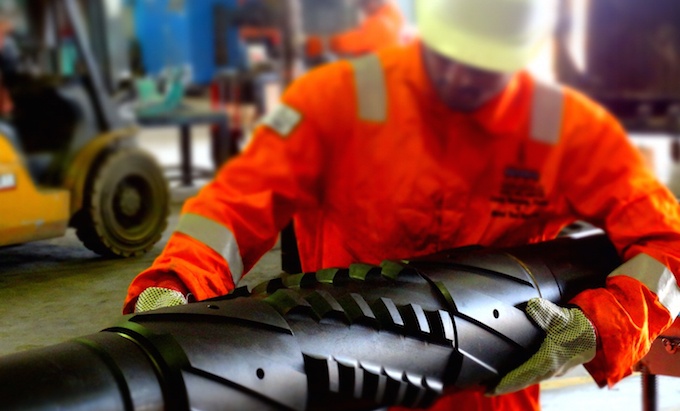The benefits of reduced service connections
As the old adage goes, a chain is only as strong as its weakest link and drill strings are no exception. Each component of the string, from the drill pipe, collars, stabilizers to the BHA tools, has a connection – a potential weak point that can break – so when it comes to connections, less is more.
What types of connections are we talking about?
There exists two types of connections in a drill string: Rig end connections, and internal service connections.
Some tools have a single piece body, while others, because of geometry, are made up by two or more pieces connected by internal service connections – and here lies the problem with many tools on the market today:
Internal connections in many tools are not strong enough for today’s requirements for torsional and tensile strengths because they were designed to match the strength of standard 3-1/2” or 5” drill pipe.
The evolution of drill pipe connections
Drill pipe connection technology has improved greatly with advancements in tensile and torsional strengths, driven by a requirement to drill increasingly deeper and into more laterally distant targets, as well as the need for improved hydraulics offered by larger 4”, 5-1/2” or 5-7/8” drill pipe.
The problem, however, is that most bottom hole assembly tools including WBCU (wellbore cleanup) tools were specified and designed to be run on and match the strength of API connections (NC50, NC38).
Drill pipe has evolved faster than the tools being run. Many tools are now the weak point in the string, and drillers need to be aware of the potential negative consequences of this, and reconsider the tools they pick for the job.
READ ALSO: The Importance of Magnets in a Wellbore Cleanup String
Making the move towards premium connections
The industry as a whole is now moving towards premium high torque-connections and larger drill pipe dimensions, and at Odfjell Well Services we made that move long ago, having invested heavily in premium rental strings. It makes sense that our WBCU tools meet the same specifications.
When I designed the original 9-5/8” RazRdillo scraper, we specified a single piece mandrel which can accommodate and which matches the torque and tensile strength of any premium drill pipe connection. This design philosophy has been carried forward throughout the entire portfolio to this day.
When I design a tool, I try to design it without service connections. However, if I am forced to use them, we design the internal connections to match the strength of premium drill pipe connections, not API connections.
If we think about this for a minute, any operator currently using 5-7/8” high torque pipe probably chose that string either because of strength, hydraulics, or both. When the operator goes to tender for WBCU tools, the specifications usually request NC50 connections and sometimes go further to specify tool strengths to match and that the vendor must supply crossovers to the 5-7/8” pipe.
The reality is that the operator will likely be introducing tools to the string which may be half the torsional and tensile strength of the drill pipe, which can limit the performance of the cleanup operations.
Another benefit of running tools with matching connections is that it eliminates the need of additional crossovers. Crossovers introduce another weak point in the string which can be easily eliminated.
I feel many operators are sadly being misled by their equipment vendors with regards to the strength of their tools, which are usually designed around API connections.
I hope if you are reading this post and you are an operator running premium drill pipe, that you check the tools you are renting meet or exceed the strength of your drill string and were not designed to meet outdated specifications.

By: Simon Leiper
Simon Leiper has worked in the wellbore clean-up industry for 15 years. He leads the wellbore cleaning product line with Odfjell Well Services and is the inventor of multiple Odfjell patent applications. He has an HND in Mechanical Engineering and has worked and lived in international locations.



